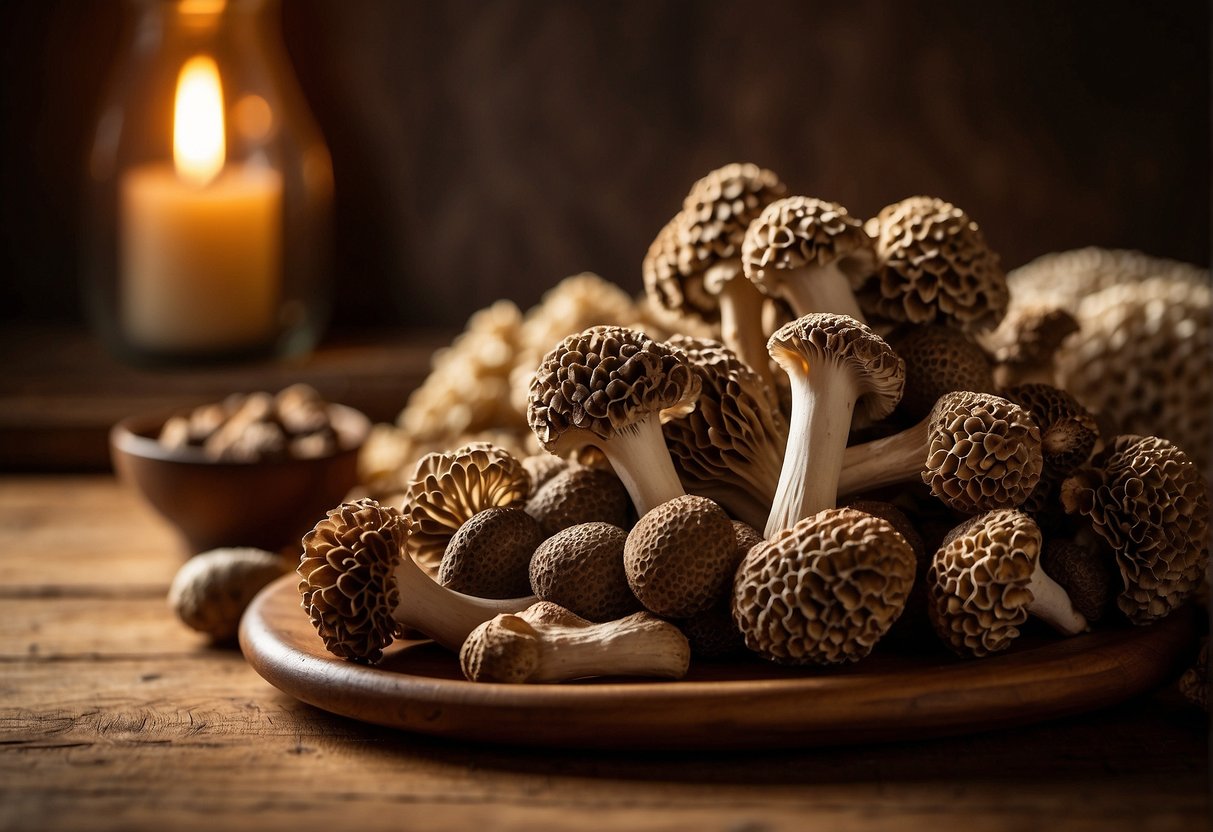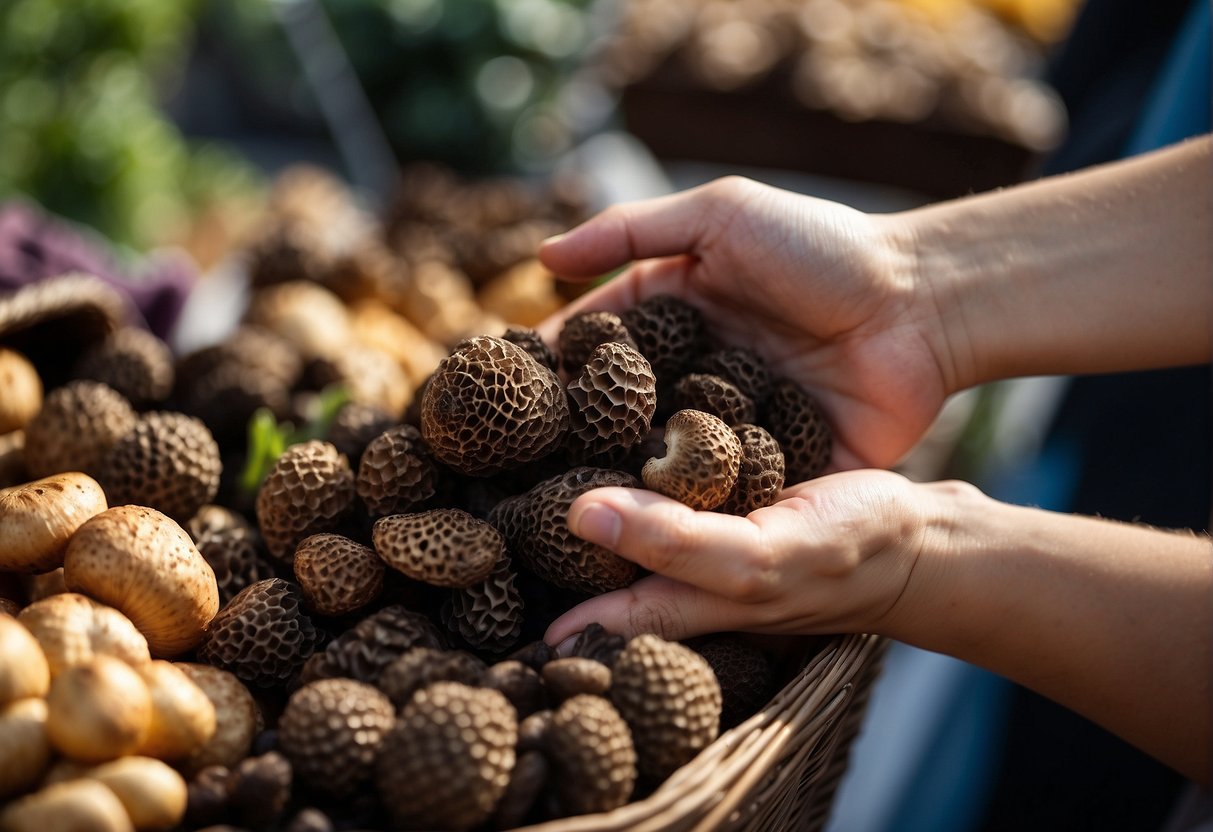When you venture into the culinary world seeking a unique and prized delicacy, morel mushrooms stand out as a forager’s treasure. Coveted for their earthy flavor and distinctive honeycomb appearance, morels command attention in gourmet dishes and enthusiasts’ palates alike. Their cost reflects this high demand and the challenges of harvest, often placing them at a premium in the market. You might have found yourself puzzled at the price tag accompanying these elusive fungi, wondering why they are so expensive compared to other mushrooms.

The answer lies partly in their mystique; morel mushrooms are not cultivated like common button or portobello mushrooms. Instead, they flourish wild in forested areas, requiring a well-trained eye to spot their camouflaged caps among the leaves and underbrush. The thrill of the hunt is part of their allure, with foragers guarding their secret picking spots zealously. Once found, morels are carefully handpicked, washed, and prepared for sale, contributing to their elevated cost.
In the culinary world, morels are celebrated for their unique flavor and texture, which chefs and food aficionados revere. They have a short season, typically from late March through May, depending on the geographical location and climate, adding to their exclusivity. Whether you are a seasoned forager or a curious food lover, understanding the nuances behind morel mushrooms’ pricing can enhance your appreciation for this seasonal delight.
Understanding Morel Mushroom Pricing
As an enthusiast of the great outdoors and the treasures it holds, you are well aware that the cost of morel mushrooms is not constant and can vary significantly. Let’s take a closer look at what goes into the pricing of these elusive fungi.
Factors Influencing Cost
The cost of morel mushrooms is strongly influenced by several key factors. Labor-intensive harvesting leads the list, as morels are predominantly foraged by hand in the wild. Unlike other mushrooms that might be easily cultivated, morels require specific conditions that are difficult to replicate, making cultivation a complex and often unsuccessful venture.
- Supply and Demand: The market operates primarily on the availability of morels, which fluctuates yearly. Low supply coupled with high demand can drive prices up considerably.
- Quality and Size: Morels are graded by size and condition. Large, undamaged mushrooms will fetch a higher price, reflecting their desirability in culinary circles for their taste and aesthetics.
Market Trends and Season Effects
In understanding morel mushroom prices, the seasonality of these fungi plays a pivotal role.
- Peak Season: During the spring, when morels are most abundant, prices may be lower. However, even within the season, a sudden surge in demand can hike up costs.
- Off-Season Demand: If your culinary pursuits demand morels throughout the year, be prepared to pay a premium for these out-of-season delights, as they are less available and often need to be shipped from regions where they might still be in season.
Market Trends: Reflective of their seasonality and labor-intensive harvest, morel mushroom prices can see significant shifts from year to year based on overall yield and consumer interest.
Cost Comparison with Other Mushrooms
When you make a cost comparison with other edible mushrooms, morels generally stand out as a higher-priced option. This is due to their unique flavor, revered status among mushroom foragers, and the challenging nature of their harvest.
- Compared to Cultivated Mushrooms: Cultivated varieties such as button mushrooms are readily available and can be farmed on a large scale, thus costing substantially less.
- Wild Varieties: Other wild mushrooms can also be pricey, yet morels particularly command a higher market price due to their distinct taste and complexity in harvesting.
Your knowledge of the elements that factor into morel pricing can help you make informed decisions when purchasing these esteemed fungi, adding another layer to your outdoor adventures.
Nutritional and Culinary Value
Morel mushrooms offer an incredible balance between nutritious benefits and culinary excellence. Here, you’ll discover why these fungi are not only a healthful choice but also a favorite amongst outdoor enthusiasts and chefs for their distinct flavors and textures.
Taste and Texture Profile
As an aficionado of the great outdoors, you appreciate the natural offerings of the forest, and morel mushrooms stand out with their unique flavor. They pack a nutty and earthy flavor profile which is highly praised in the culinary world. The texture of morels is also distinct; it’s meaty yet tender, making it a versatile ingredient in a variety of dishes.
Health Benefits
When you’re in tune with nature, you understand the importance of what you consume. Morel mushrooms are rich in vitamin D, with 206 IU per 100 grams, contributing to your overall health, especially bone health. They also provide significant amounts of protein and fiber, and are a source of essential minerals such as copper and potassium. All these nutrients contribute to the mushrooms’ nutritional benefits, which align perfectly with a wholesome outdoors lifestyle.
Culinary Uses
In the kitchen, your creativity shines when you use ingredients that are both versatile and flavorful. Morels are a gourmet favorite, whether you’re sautéing them for a steak side or incorporating them into sophisticated sauces. Due to their quality and unique flavor, they complement various ingredients without overpowering dishes. For the ultimate experience, try them in risottos or pasta where their earthy flavor can be thoroughly enjoyed.
Buying and Storing Morel Mushrooms

When it comes to morels, ensuring you purchase quality mushrooms and store them correctly is key to maintaining their unique flavor and texture.
Where to Purchase
Fresh morel mushrooms are a prized find during spring, and your best bet is local farmers’ markets or specialty stores. For out-of-season or convenient buys, dried morels can be found online or in gourmet shops. Sites like Gourmet Mushroom Products offer growth kits, while eBay has listings for both fresh and dried morels.
Preservation Methods
Once you’ve got your morels, there are a few options for storage. Fresh morels can be kept in the refrigerator for up to a week when stored in a paper bag; avoid plastic as it traps moisture and accelerates spoilage. Airtight containers or plastic bags are ideal for freezing, which can extend their life by several months. Dried morels should be stored in a cool, dark place and, when properly housed, can last for an extended period.


